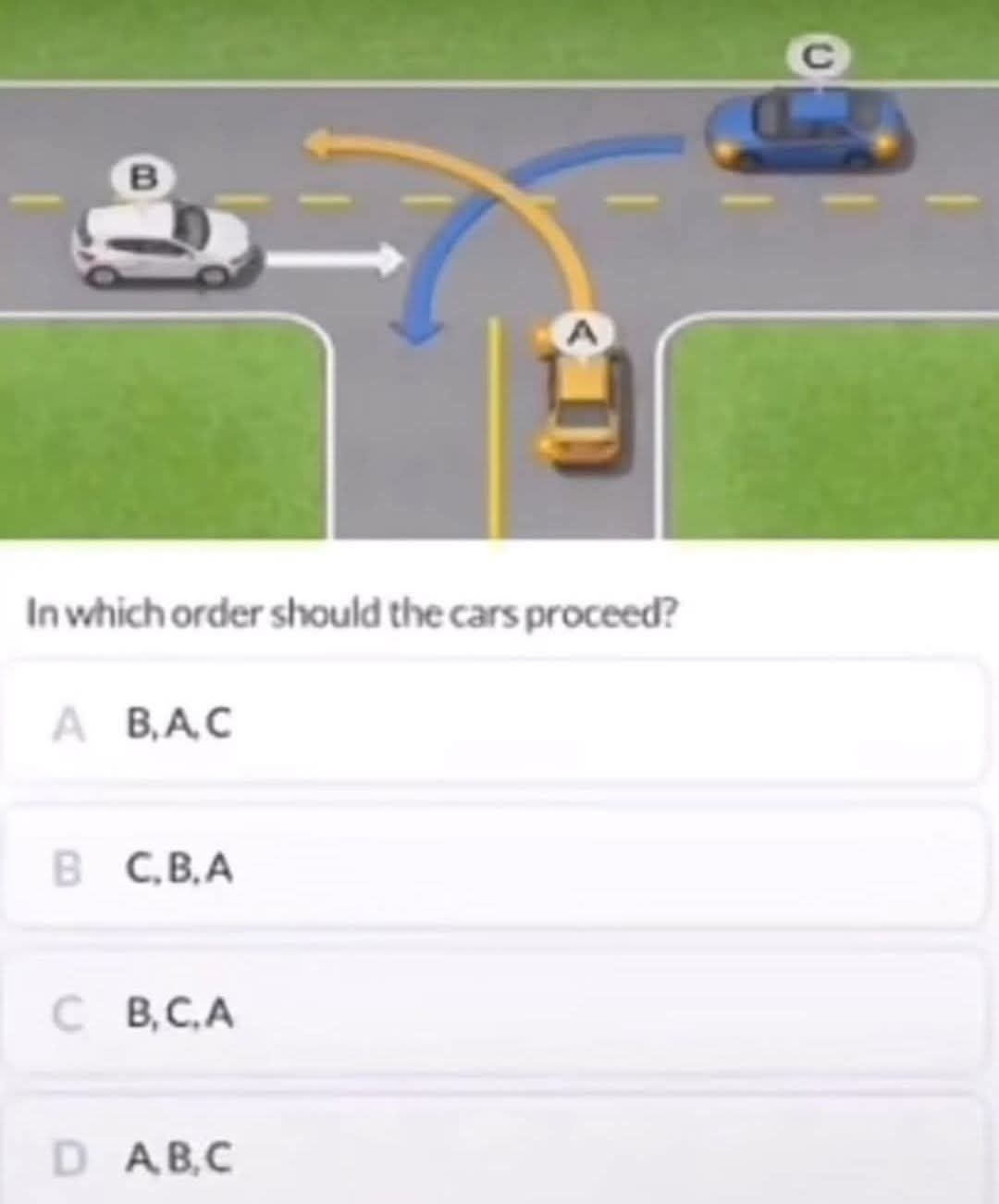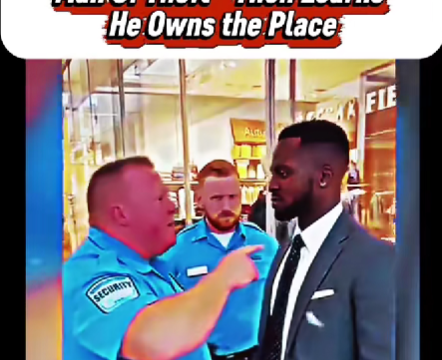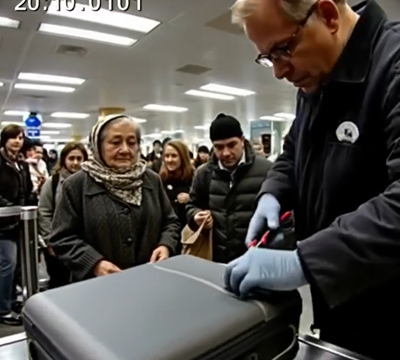Traffic rules are meant to make our roads safer and more organized, but every now and then, a situation pops up that causes even the most experienced drivers to hesitate. One such scenario, a three-way intersection puzzle, has gone viral online because of how deceptively simple it seems at first glance—until you try to figure out who should go first. It’s the kind of brain teaser that tests not just your common sense, but also your actual understanding of traffic laws.

If you’ve ever sat at an intersection, unsure of who has the right of way, you’re definitely not alone, and this particular puzzle might be just the mental workout you need. The setup is straightforward: there’s a three-way intersection with no stop signs or traffic signals, and three cars are involved. Car A, which is yellow, wants to turn left. Car B, a white vehicle, wants to go straight. Car C, the blue car, also intends to turn left. The question is simple—who should go first? The multiple-choice options given are: A) B, A, C; B) C, B, A; C) B, C, A; D) A, B, C. It seems easy until you try to apply actual driving logic to it. To solve this, we need to refer to standard right-of-way rules that apply in the U.S. when no traffic signs or signals are present.
First and foremost, vehicles traveling straight have the right of way over those turning left. Second, a vehicle turning left must yield to oncoming traffic going straight. Lastly, when two vehicles are facing each other and both want to turn left, they can often do so simultaneously, as long as their paths don’t cross. Applying these principles, we start with Car B, the white car that’s going straight. Because it’s not turning, it has the highest priority and should proceed through the intersection first. That checks the first box. Next, we look at Car A, the yellow vehicle. Since it’s turning left and its path would cross in front of Car B’s, it must wait until Car B has gone through. Once Car B has cleared the intersection, Car A can safely make its turn without interference.
Now we consider Car C, the blue car. Like Car A, it also wants to turn left, but its turn won’t conflict with Car A’s since they’re turning onto different roads, not into each other’s path. However, Car C must still wait until both Car B and Car A have cleared the intersection before it can proceed safely. So, based on this analysis, the correct order is: Car B goes first, followed by Car A, and finally Car C. Therefore, the correct answer to the puzzle is Option A: B, A, C. This puzzle trips a lot of people up because it challenges them to think beyond surface-level assumptions. Many assume that all left-turning cars must yield equally or that two left-turning vehicles always go at the same time, but that’s not always the case. Understanding the direction each vehicle is turning and whether their paths intersect is key.
The scenario also highlights how critical it is to understand basic traffic laws—not just for passing your driving test, but for staying safe and avoiding accidents on the road. When faced with an uncontrolled intersection, the decisions you make need to follow established right-of-way guidelines to ensure everyone gets through safely and efficiently. So, let this puzzle serve as a reminder of a few fundamental traffic rules: when in doubt, straight-moving traffic goes before turning vehicles; left-turning drivers must yield to oncoming straight traffic; and two left-turning cars facing each other can proceed at the same time only if they aren’t crossing into each other’s paths. The next time you’re behind the wheel and find yourself in a similar situation, you’ll be better equipped to make the right call. Not only will you keep traffic moving smoothly, but you’ll also avoid confusion, honking horns, and potential fender-benders.





